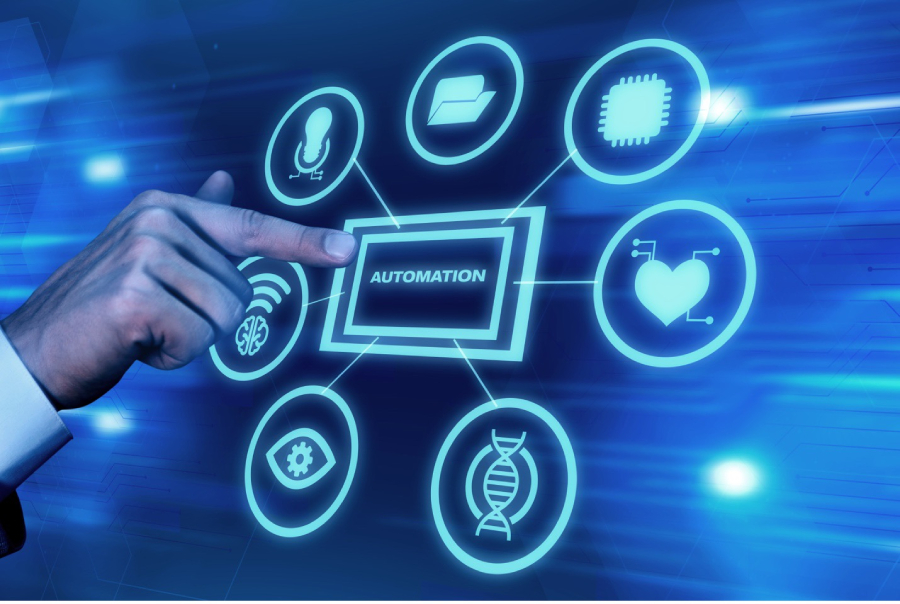Share
Do you remember the days when customer service was personal? You would call up a company and speak to a human being who could help you with your problem. Nowadays, it seems like all of that has changed.
With more and more businesses are switching to software-as-a-service (SaaS) models, it seems like that personal approach to customer service is all but gone, but does it have to be like that?
In this article, we will discuss how SaaS has killed customer service and what we can do to fix the problem.
What is SaaS?
Software-as-a-service (SaaS) is a type of subscription software that allows users to access and use the software from a remote location or “The Cloud”.
SaaS is typically delivered over the internet and can be accessed through a web browser.
It is a newer model of software that has become increasingly popular in recent years, for both small and large businesses alike.
The appeal of SaaS is that it is typically less expensive than traditional software licenses, and it does not require installation or maintenance. There are also many tax advantages to SaaS over the typical model of purchasing software outright.
SaaS also allows businesses to scale their use of the software more easily, as they can add or remove users as needed.
Other benefits of SaaS include increased collaboration and flexibility, as users can access the software from anywhere with an internet connection.
How has SaaS killed customer service?
By commoditizing it. It’s as simple as that.
SaaS has created a world where customer service is a race to the bottom. In order to compete, companies are forced to cut costs, which often means cutting corners on customer service.
The first way they do this is by using automated systems instead of real people. This may save the company money, but it does not provide a good experience for the customer. It also means that when a real person is needed, they are often not available.

Instead of personalized interaction with another person, you get a bot, or an outsourced customer service agent with a script and a generic name, like Joe or Susan.
The second-way companies cut customer service costs is by making it hard to reach a real person. They do this by hiding their contact information, or by making it so difficult to find that most people give up before they get to speak to someone.
This means that even when you do reach a human, they are often not empowered to actually do anything to help you.
The system is set up so that they have to transfer you to someone else or escalate your issue to a supervisor who will call you back later – if they ever do.
It’s no wonder that customer satisfaction levels are at an all-time low.
The use of automation and bots

Both automation and bots are excellent tools in the right place.
They can help speed up processes and free up customer service representatives to provide a better experience to those who need it the most.
However, they are often used as a way to avoid speaking to customers altogether.
This is done by replacing human interaction with automated responses that do not actually address the issue at hand.
It’s a way of cutting costs by reducing the need for customer service representatives.
In theory, it sounds great!
In practice, it’s a disaster.
Bots are not yet able to provide the same level of customer service as humans.
They cannot read between the lines or understand the emotional needs of a customer. All they can do is provide generic responses that are often not helpful.
The issue of outsourcing

Another way companies cut costs is by outsourcing customer service to countries with lower wages. This may save the company money, but again, it does not provide a good experience for the customer.
It should be noted that this is not the fault of the underpaid customer service operative, but rather the fault of the company that is trying to save a few bucks.
The last way companies cut costs is by understaffing customer service. This means that customers have to wait a long time to talk to someone, if they are able to get through at all.
All of these cost-cutting measures result in poor customer service. It’s bad for customers and bad for business. If you want good customer service, you need to find a company that values its customers and is willing to invest in them.
Many of these companies use phrases like “We love our customers” or “We [heart] our customers”, but do they really? Don’t be fooled.
What makes for good customer service?

There are a few key things that make for good customer service:
- The first is accessibility. When a customer has a problem, they should be able to easily get in touch with someone who can help them. Instead, most of the time, we get automated responses or are placed on hold for long periods of time.
- The second is speed. When a customer has a problem, they should be able to get a resolution quickly. However, with SaaS companies, oftentimes it takes days or even weeks to get a response.
- The third is personalization. Good customer service means that the customer feels like they are talking to a real person, not a machine. They should be able to get their problem resolved in a way that is tailored to their individual needs. It should also feel like the customer service agent is empowered to actually help them, not just give them lip service.
- The fourth and final point is that good customer service should be proactive, not reactive. This means that the company should be constantly working to improve the product and the customer experience, not just waiting for customers to come to them with problems.
Unfortunately, most companies today are not meeting these standards. In fact, many are actively making the customer service experience worse.
Does it have to be this way?

No, no it doesn’t.
SaaS companies have the unique opportunity to change the way customer service is done. We can focus on making it more human, more personal, and more proactive.
Unfortunately, most consumers have gotten used to poor customer service for far too long, particularly from SaaS providers and they don’t expect anything better. This is a vicious cycle that needs to be broken.
It doesn’t have to be this way though – there are some companies out there who still care about their customers and provide them with the excellent service they deserve. One excellent example is Amazon AWS and the other is EzProtect by Adaptus, who staff their support center with technical people, who actually know the products they are supporting. We need to support these businesses so that others will follow suit and finally break the cycle of poor customer service.
Only then can we hope to see a future where SaaS providers actually provide the great customer service they claim to. Otherwise, we’re just doomed to repeat the same mistakes over and over again.
How Support Should Be
We founded Adaptus because we wanted to do things differently – We wanted to show the world that it was possible to have a SaaS company that actually cared about its customers.

We provide 24/7/365 support because we believe that our customers should always be able to reach us when they need help. We have a team of highly trained Salesforce certified support staff who are all passionate about helping our customers. When you speak to one of our support staff, you are speaking to the actual developers who are creating EzProtect.
We believe that in order for developers to create a product that connects with our customers, they must also engage directly with our customers to understand what they are going through.
Customer service should be about more than just resolving issues – it should be about building relationships. We take the time to get to know our customers and we always go the extra mile to help them.
We made it our mission to change the way people think about customer service and support and to show the world that it can be done better.
At Adaptus, we believe that customer service should be human, personal, and proactive.
With Adaptus you will always get someone’s full contact info (first name, last name, title, and email). You will have a direct line to us when you need us. You will always talk to someone who actually knows the product and is experienced in customer service.
We are different and better because we’re human first, software second. We believe that people matter and that’s how we treat our customers.
We regard our customers as our partners in success. We know that when our customers succeed, we succeed.
We are available when you need us and we don’t hide behind automation or a script. We proactively reach out to our customers to make sure they are getting the most out of our products and services.
We want to hear your feedback so we can continue to improve our products and services. We are constantly working to improve the product and the customer experience.
Want to know how you can protect your Salesforce and data from ransomware attacks? Contact us for a RISK FREE Salesforce Security Assessment to understand if you are at risk today.

Share
Did you love this blog and wish there could be more?
It is our goal to keep you informed about everything you need to know about Salesforce security to keep your Salesforce data and company safe and secure by providing you with the highest quality of original content.
If this sounds good to you, then sign-up below to be one of the first to know when the next super awesome Salesforce security blog has been released.


